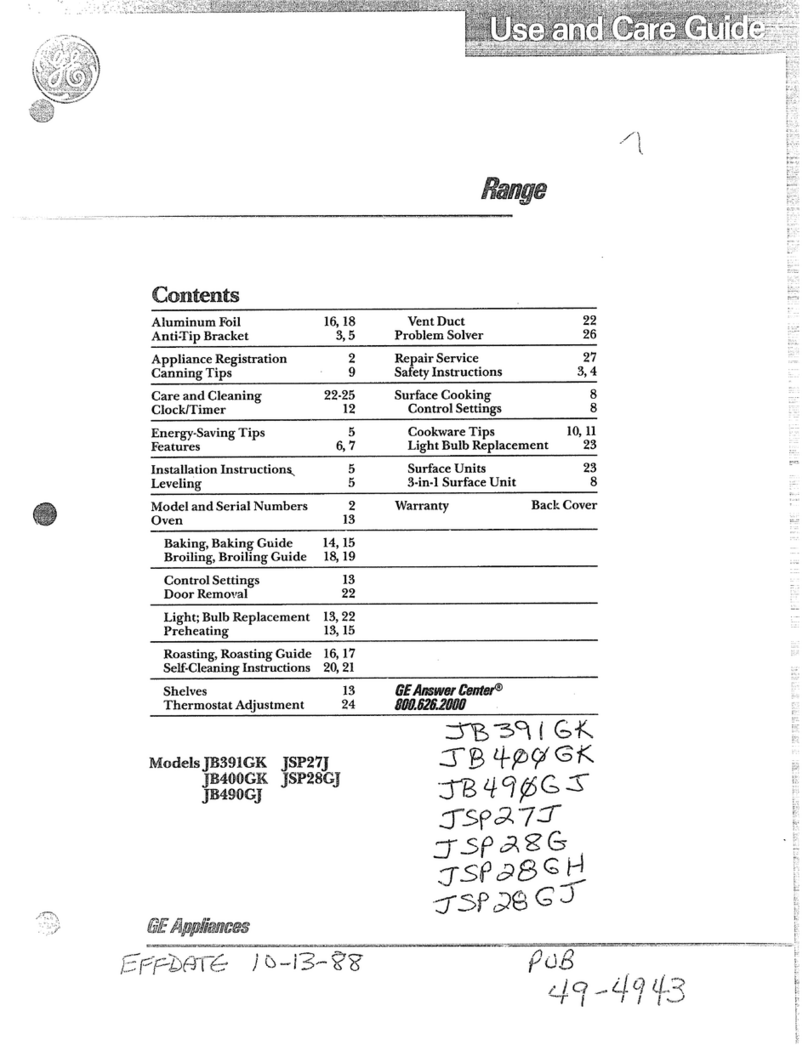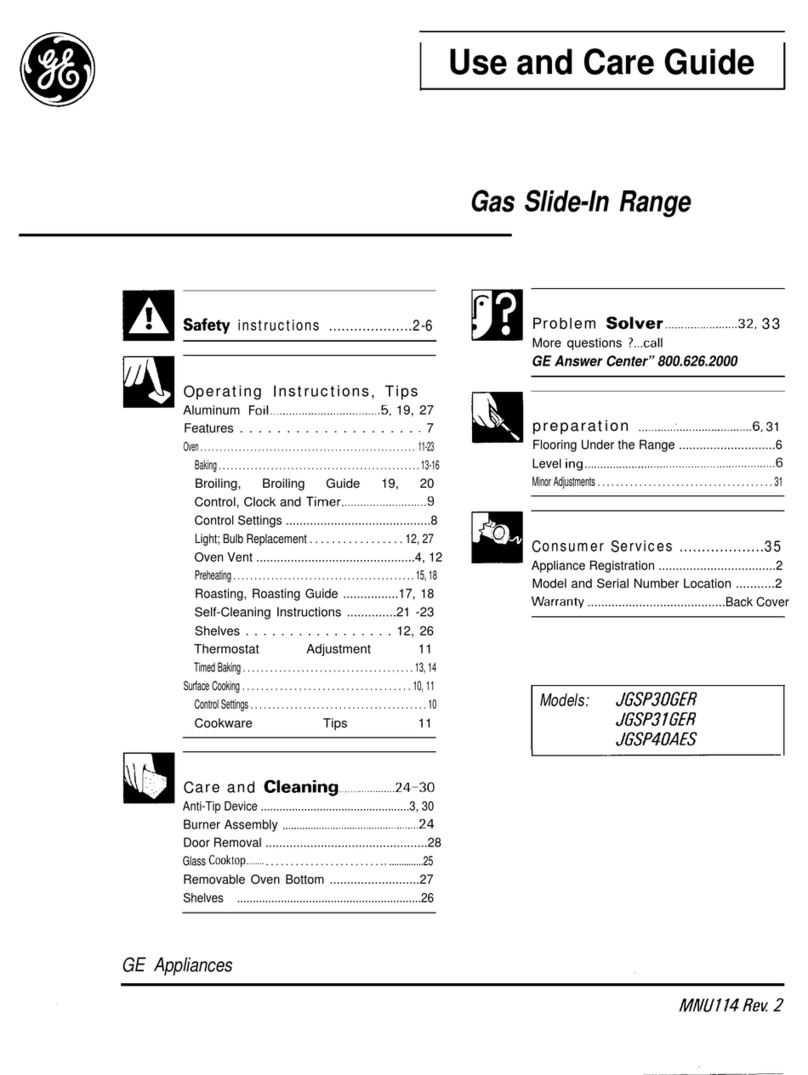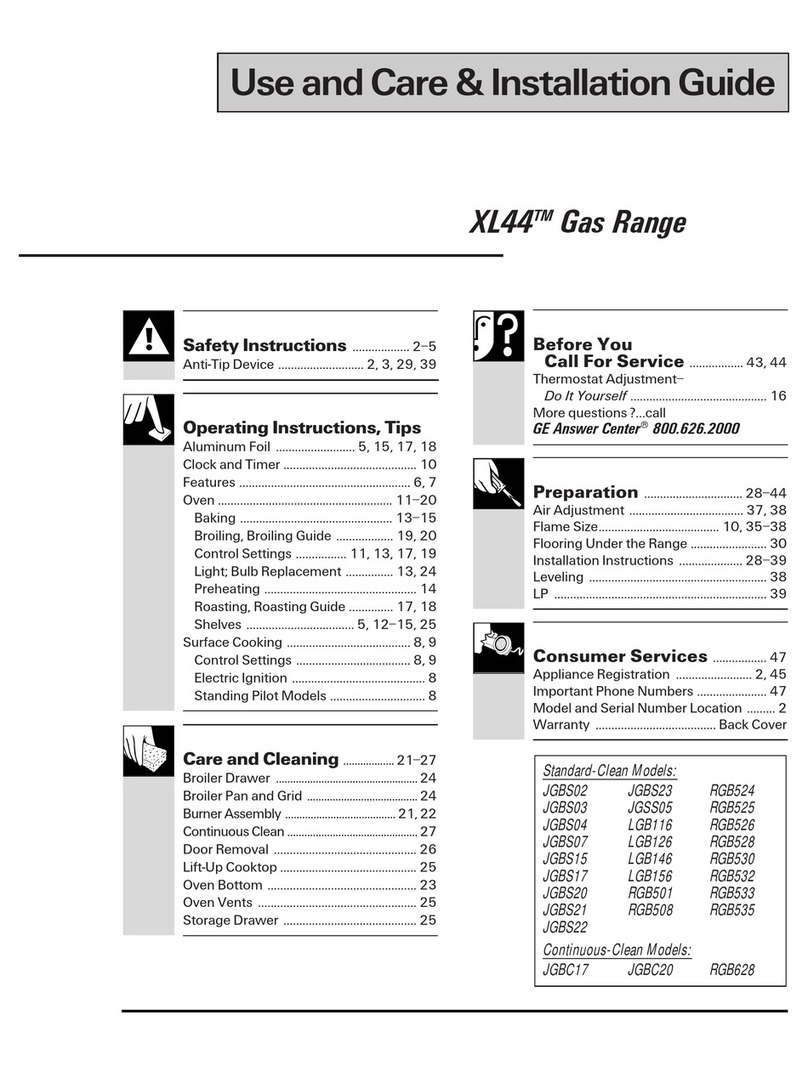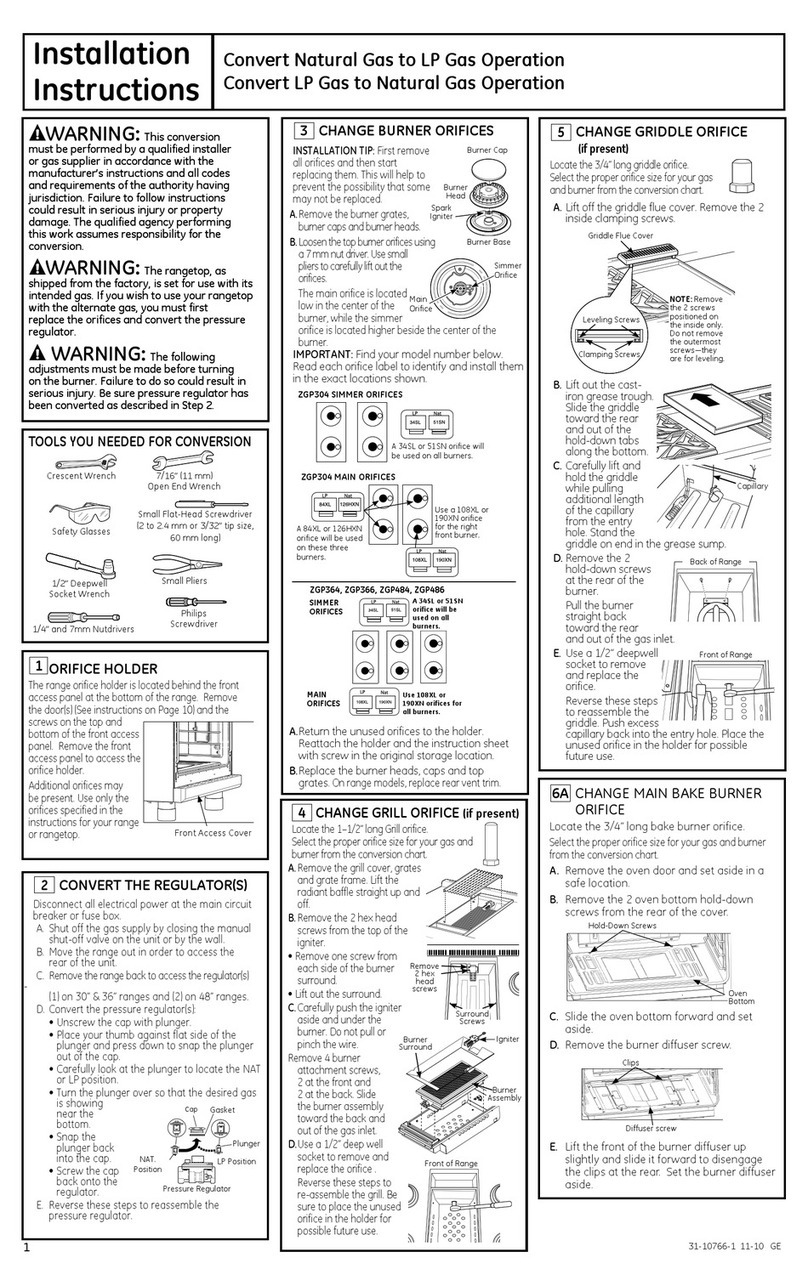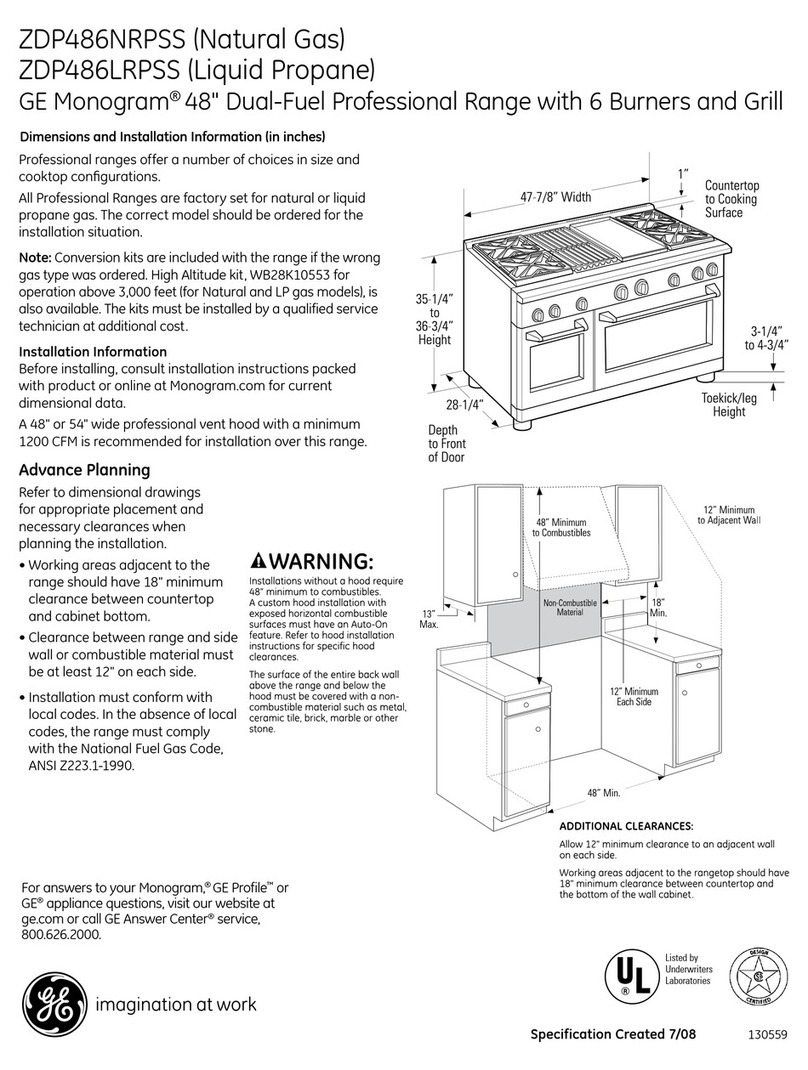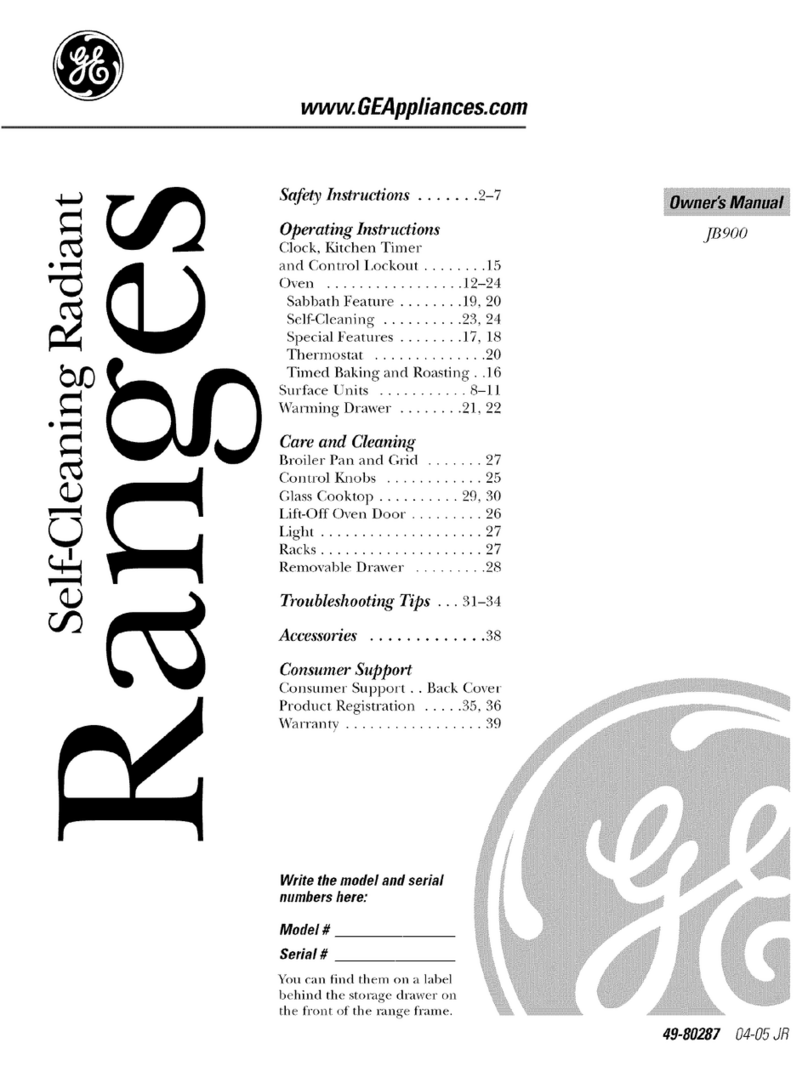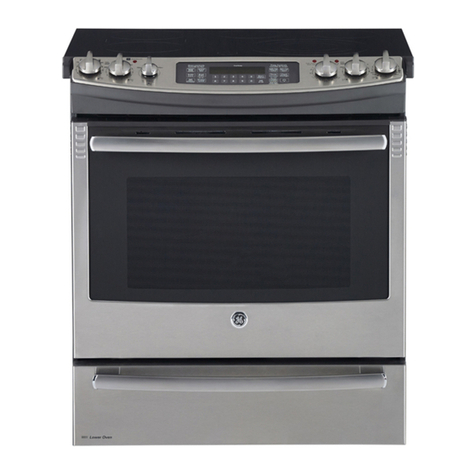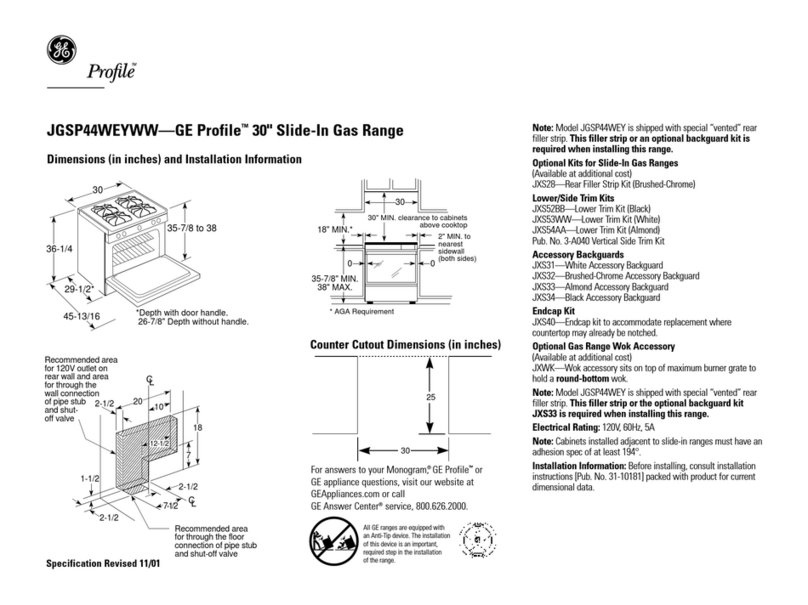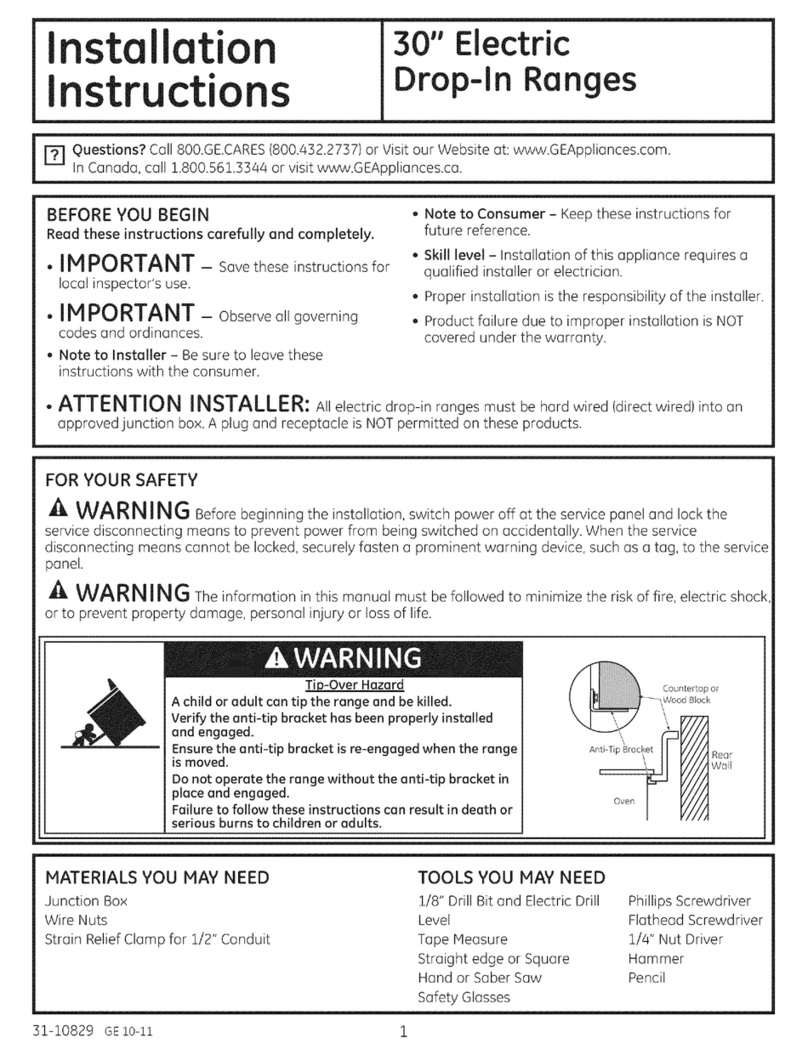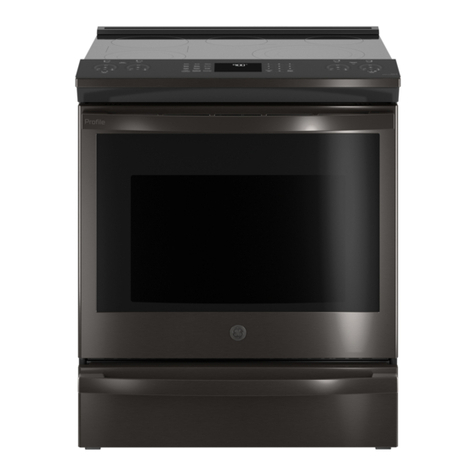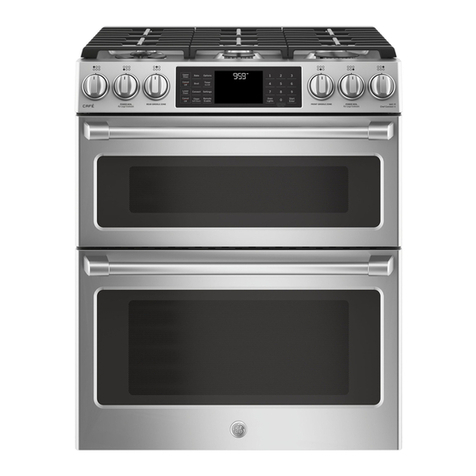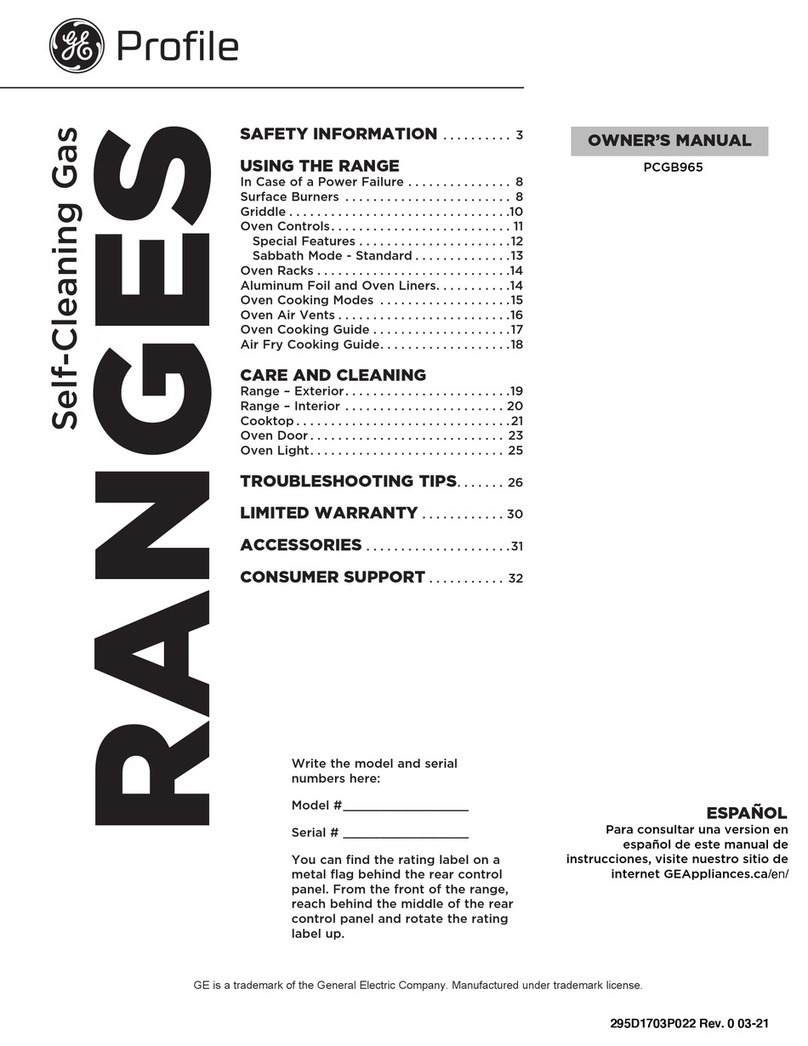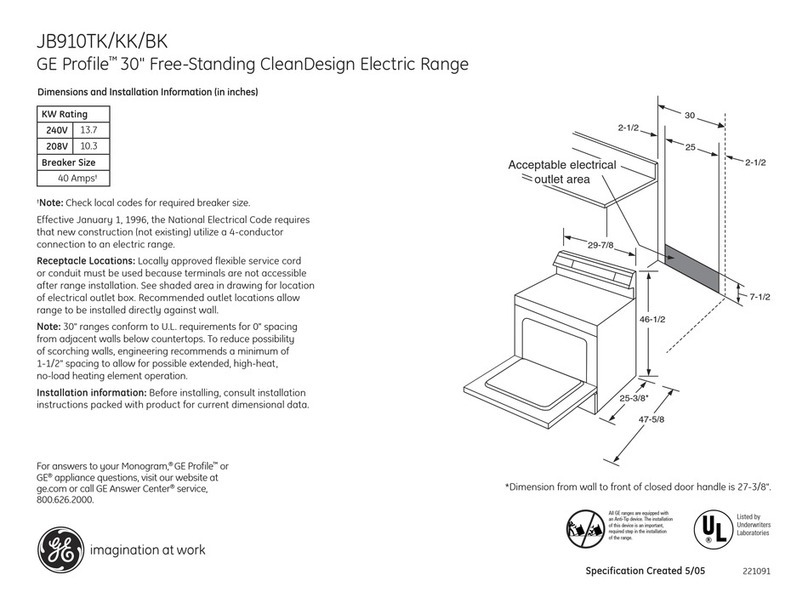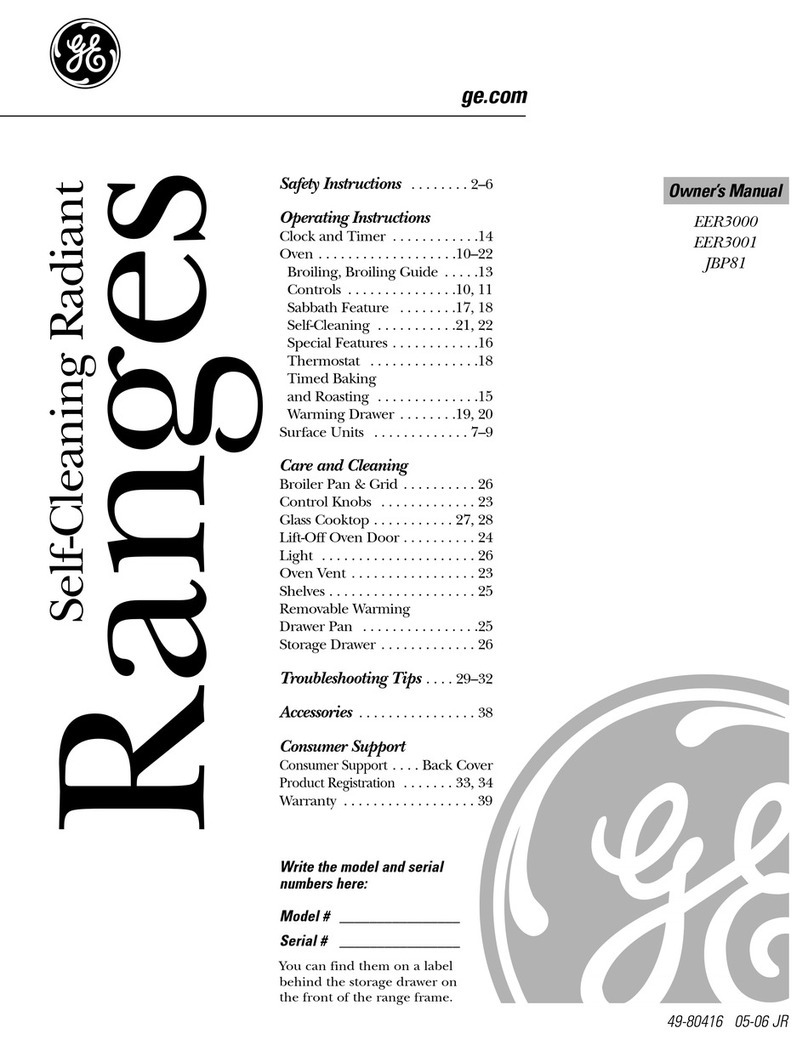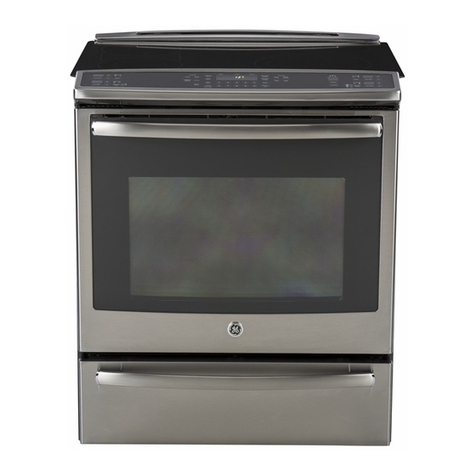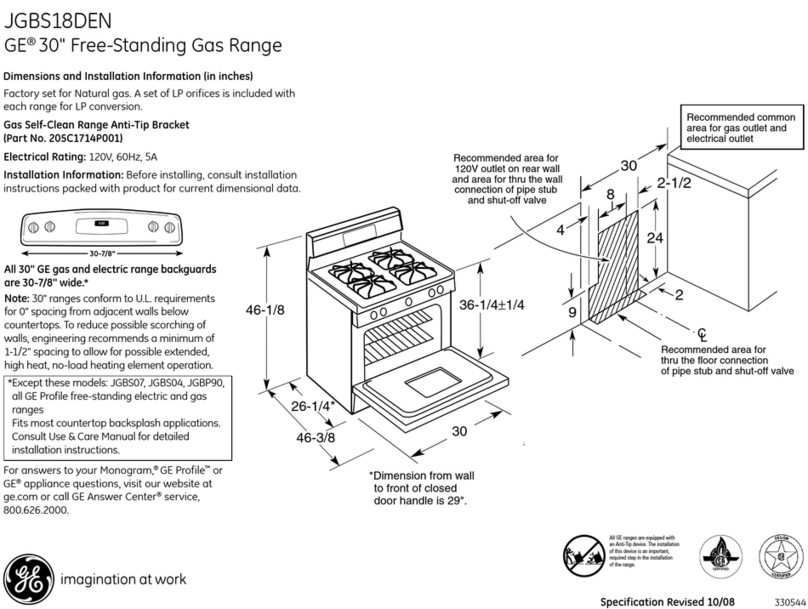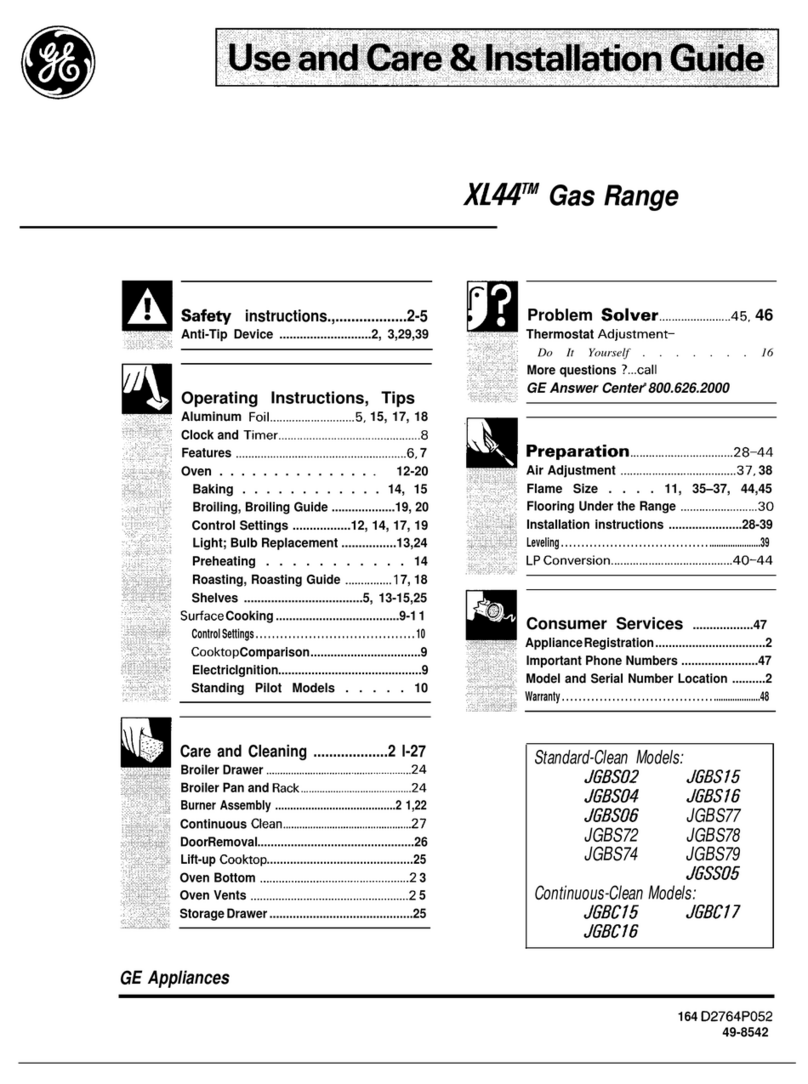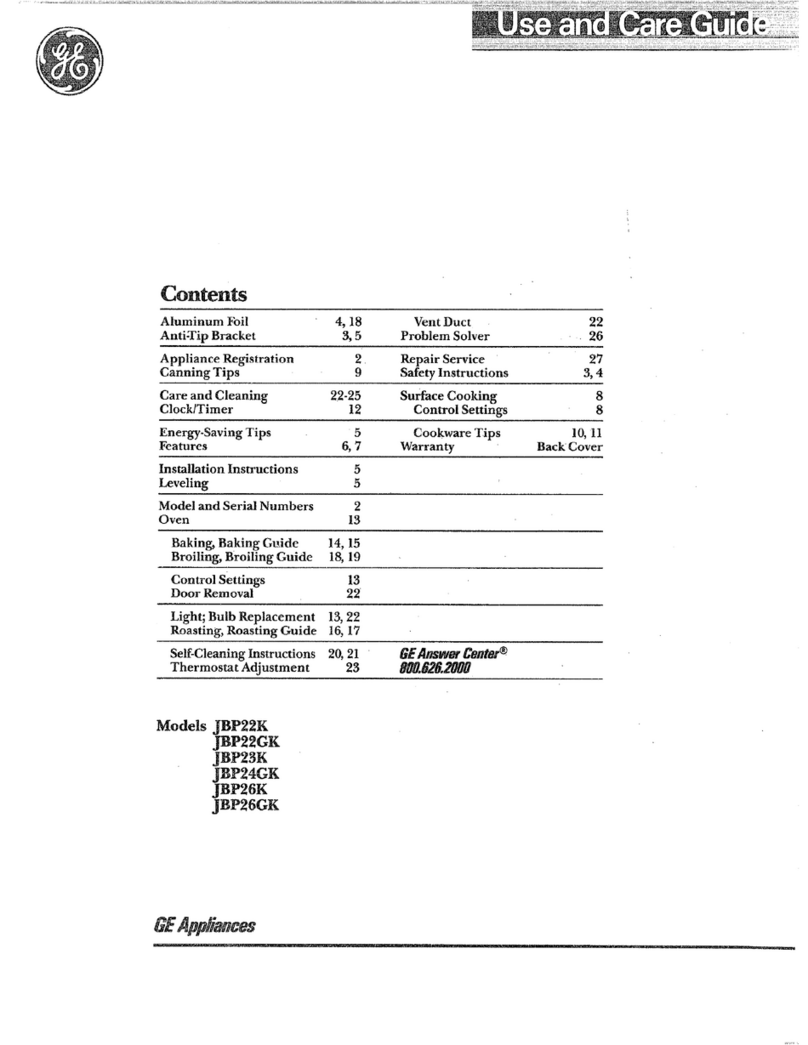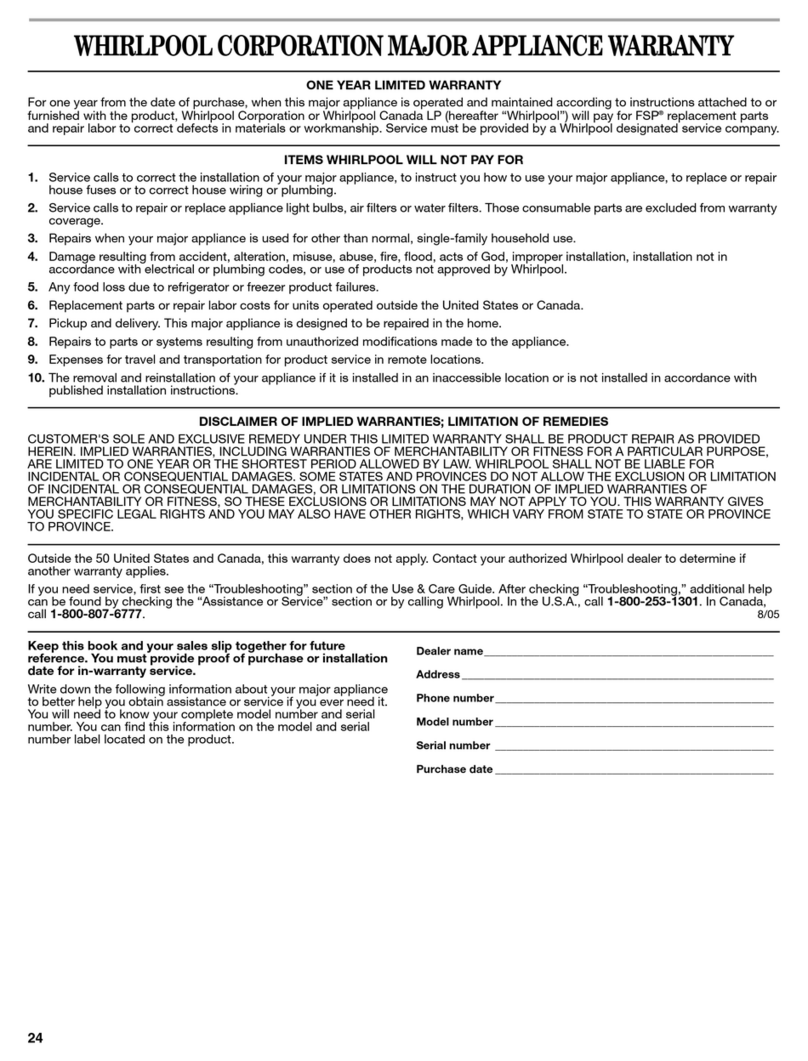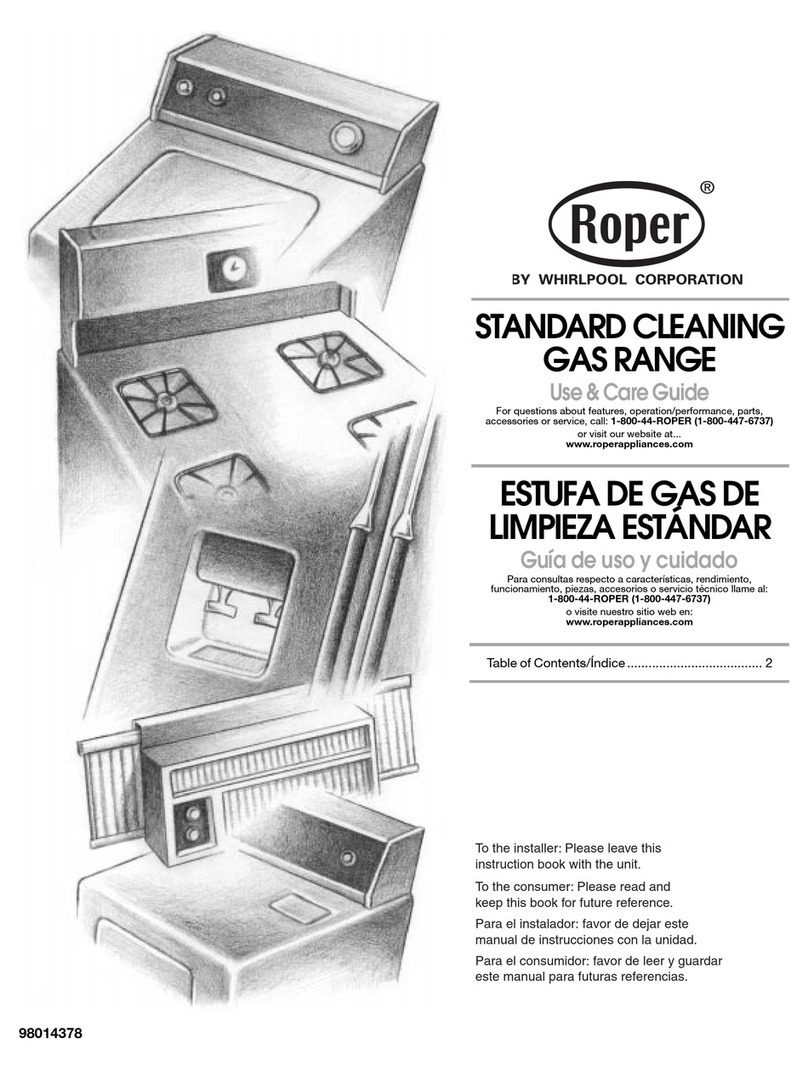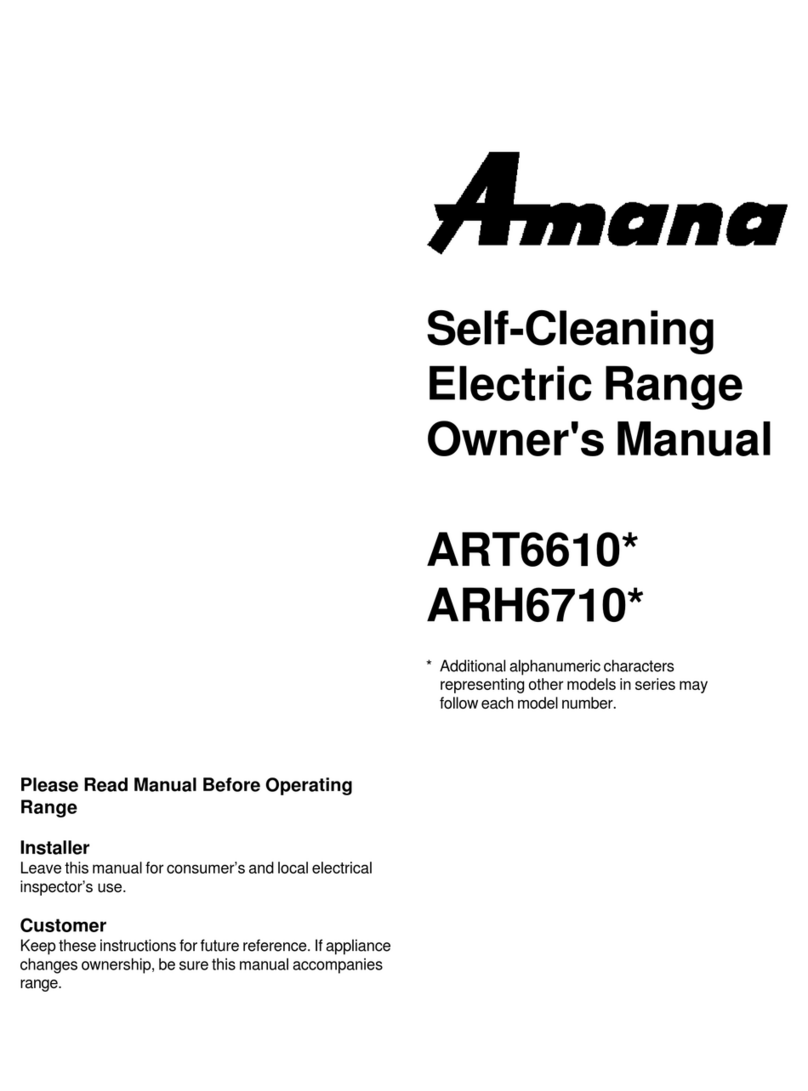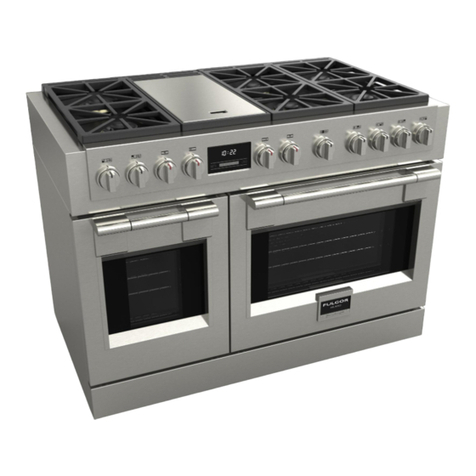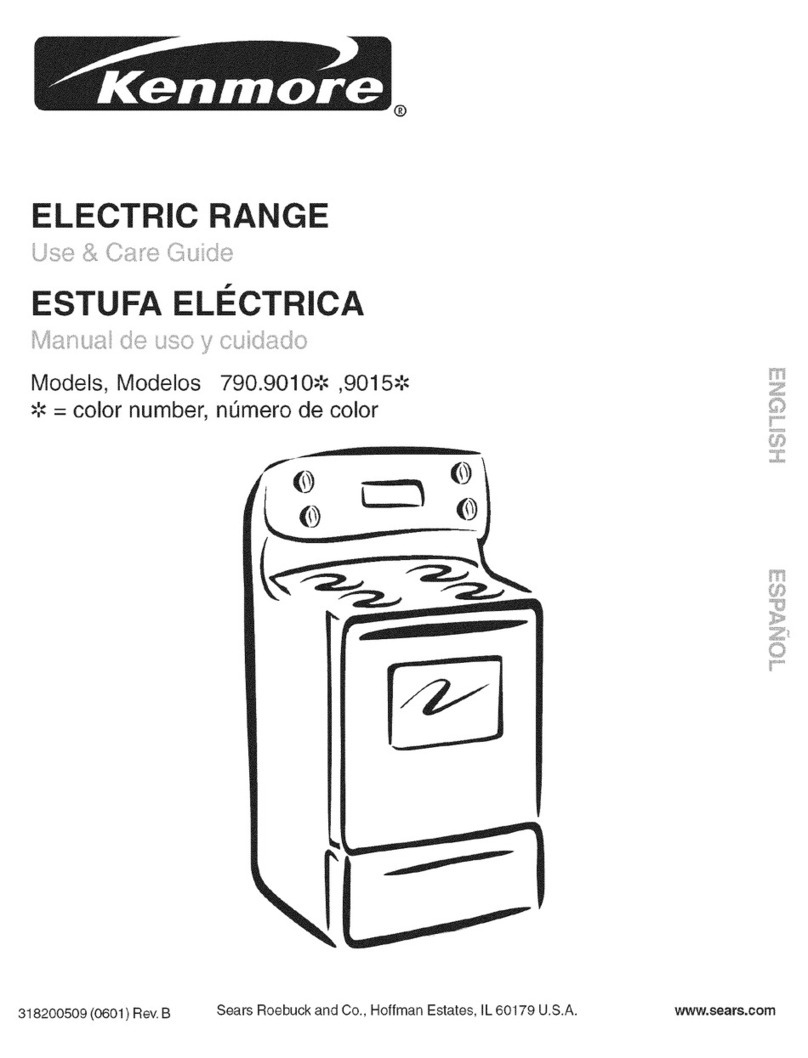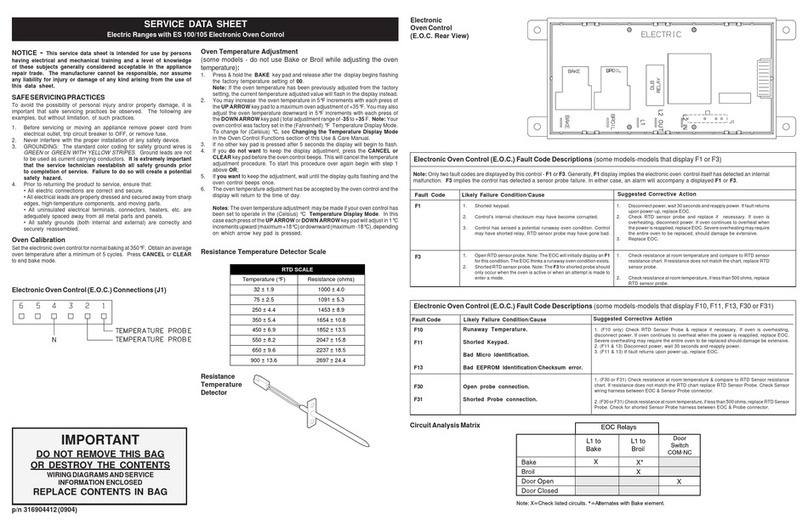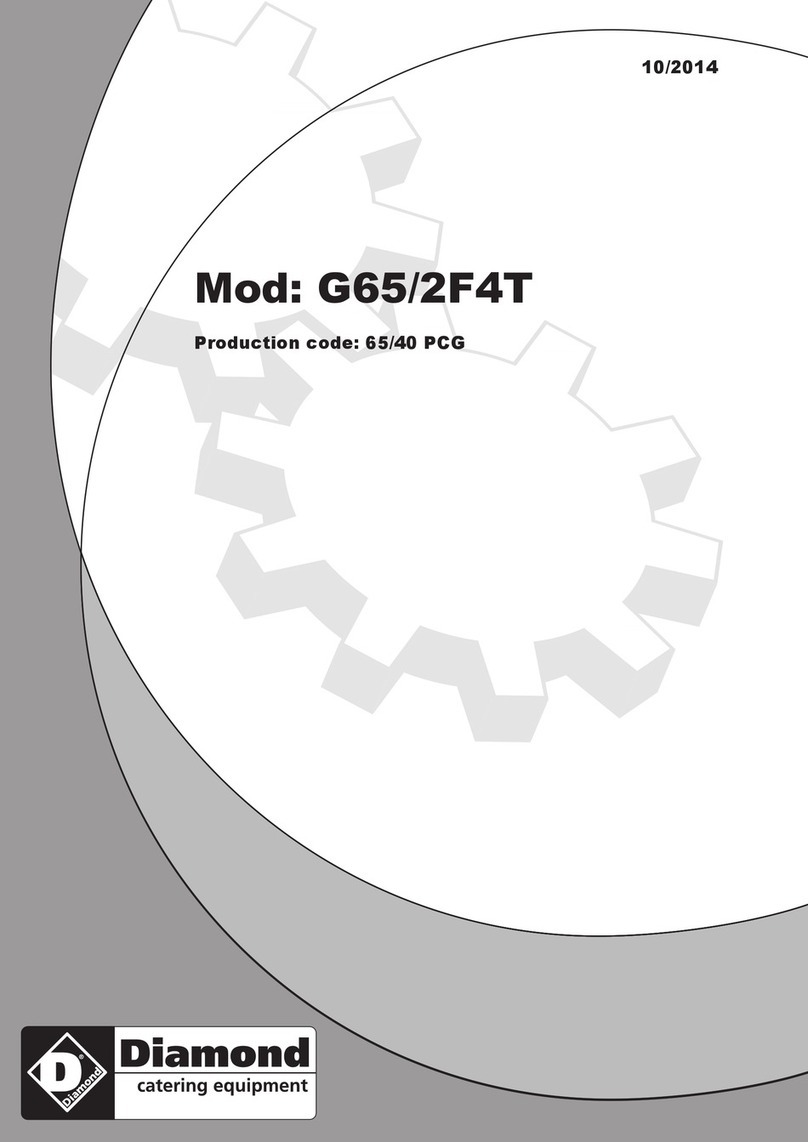
Use care when touching the cooktop. The glass surface
of the cooktop will retain heat after the controls have
been turned off.
Do not cook on a broken cooktop. If glass cooktop
should break, cleaning solutions and spillovers
may penetrate the broken cooktop and create a
risk of electric shock. Contact a qualified technician
immediately.
Avoid scratching the glass cooktop. The cooktop can be
scratched with items such as knives, sharp instruments,
rings or other jewelry, and rivets on clothing.
Do not place or store items that can melt or catch fire
on the glass cooktop, even when it is not being used. If
the cooktop is inadvertently turned on, they may ignite.
Heat from the cooktop or oven vent after it is turned off
may cause them to ignite also.
Use CERAMA BRYTE®ceramic Cooktop Cleaner and
CERAMA BRYTE®Cleaning Pad to clean the cooktop.
Wait until the cooktop cools and the indicator light goes
out before cleaning. A wet sponge or cloth on a hot
surface can cause steam burns. Some cleaners can
produce noxious fumes if applied to a hot surface. Note:
Sugar spills are an exception. They should be scraped
off while still hot using an oven mitt and a scraper. See
the Cleaning the glass cooktop section for detailed
instructions.
Read and follow all instructions and warnings on the
cleaning cream label.
RADIANT COOKTOP SAFETY INSTRUCTIONS
(Some models)
Do not immerse or soak the removable surface units.
Do not put them in a dishwasher. Do not self-clean the
surface units in an oven. Doing so may cause them to
fail presenting a burn or fire hazard.
Do not use a surface unit (heating element) if it develops
a glowing spot during use or shows other signs of
damage. A glowing spot indicates the surface unit may
fail and present a potential burn, fire, or shock hazard.
Turn the surface unit off immediately and have it
replaced by a qualified service technician.
To avoid the possibility of a burn or electric shock, always
be certain that the controls for all surface units are at
the OFF position and all coils are cool before attempting
to lift or remove a coil surface unit.
Do not use aluminum foil to line drip pans. Foil can trap
heat or melt, resulting in damage to the product and a
shock or fire hazard.
Be sure the drip pans are not covered and are in place.
Their absence during cooking could damage range
parts and wiring.
COIL COOKTOP SAFETY INSTRUCTIONS
(Some models)
5
OVEN SAFETY INSTRUCTIONS
Stand away from the range when opening the oven door.
Hot air or steam which escapes can cause burns to
hands, face and/or eyes
Keep the oven vent unobstructed.
Keep the oven free from grease buildup. Grease in the
oven may ignite.
Place oven racks in desired location while oven is cool.
If rack must be moved while oven is hot, do not let pot
holder contact hot heating element in oven.
When using cooking or roasting bags in the oven, follow
the manufacturer’s directions.
Pull the oven rack to the stop-lock position when loading
and unloading food from the oven. This helps prevent
burns from touching hot surfaces of the door and oven
walls.
Do not leave items such as paper, cooking utensils or food in
the oven when not in use Items stored in an oven can ignite.
Do not use aluminum foil to line the oven bottom.
Foil can trap heat or melt, resulting in damage to the product
and a shock or fire hazard.
Accessible parts may become hot during use. Young
children should be kept away.
Accessible parts may become hot when the grill is in use.
Children should be kept away.
Do not use harsh abrasive cleaners or sharp metal scrapers
to clean the oven door glass since they can scratch the
surface, which may result in shattering of the glass.
During use the appliance becomes hot. Care should be taken
to avoid touching heating elements inside the oven.
During operation of the oven the surfaces of the drawer
can get hot.
WARNING
WARNING
WARNING
